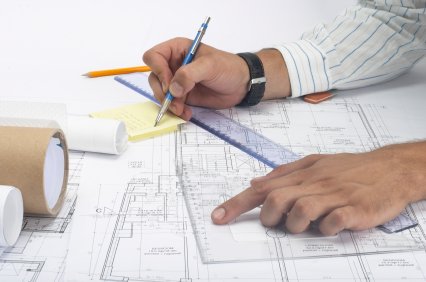Architect Portfolio Samples That Attract Clients Immediately
Architect Portfolio Samples That Attract Clients Immediately
Blog Article
Understanding the Diverse Career Paths Available for Aspiring Architect
As an aspiring Architect, you have a globe of job courses waiting for you. Whether you're attracted to standard design or the nuances of lasting design, there's a specific niche that aligns with your rate of interests.
Traditional Style: Designing Structures and Structures
Traditional style focuses on creating structures and frameworks that mix performance with visual charm. As you discover this field, you'll appreciate the elaborate equilibrium between type and purpose. You'll learn to draw inspiration from historic styles, including components like symmetry, products, and workmanship. Your layouts can mirror social heritage, showcasing regional customs while meeting contemporary needs.
You'll develop abilities in drafting, model-making, and site evaluation, enabling you to envision and connect your ideas successfully. Engaging with clients, you'll require to comprehend their vision and equate it into feasible designs.
Furthermore, constructing codes and sustainability techniques are important in your work, guaranteeing your structures are ecologically friendly and risk-free. As you expand in your job, you'll locate possibilities in household, business, and even reconstruction projects, each offering distinct difficulties. Accepting traditional architecture leads the way for a fulfilling job that pays homage to the past while forming the future.
Urban Planning: Forming Communities and Public Spaces
As an ambitious Architect, you can play an essential duty as a metropolitan organizer, changing exactly how neighborhoods work and engage. By employing community involvement methods, you'll ensure that homeowners have a voice fit their atmosphere. And also, integrating lasting design principles will assist produce areas that not just meet today's demands but additionally secure the future.
Role of Urban Planners
While many might believe of engineers as the single visionaries behind structures, metropolitan planners play a crucial role in forming the wider landscape of neighborhoods and public rooms. By working together with different stakeholders, you'll help make parks, transportation systems, and property areas that promote social communication and accessibility. Your know-how in spatial layout and area characteristics allows you to envision future growth while maintaining social heritage.
Community Engagement Techniques
Efficient neighborhood interaction approaches are vital for city planners to ensure that the voices of homeowners are listened to and valued in the preparation process. To promote purposeful dialogue, you ought to prioritize open online forums and workshops where neighborhood participants can reveal their ideas and issues. By actively listening and incorporating comments, you'll produce areas that show the community's demands, eventually leading to more successful and sustainable metropolitan settings.
Sustainable Style Concepts
When designing metropolitan areas, integrating sustainable style concepts is critical for producing environments that grow both environmentally and socially. You should begin by concentrating on power performance, using products that decrease waste and promote recycling. Take into consideration incorporating environment-friendly spaces, like parks and yards, to enhance biodiversity and improve air top quality. Advertising walkability and public transportation can reduce dependence on cars, fostering a healthier area.
Designing with water conservation in mind is also crucial-- believe concerning rain yards and permeable surface areas to manage stormwater. Involving neighborhood participants during the planning process warranties that the spaces you develop fulfill their requirements and encourage social communication. By welcoming these concepts, you'll add to lively, sustainable metropolitan landscapes that profit everybody.

Landscape Architecture: Producing Sustainable Exterior Settings
As you discover landscape style, you'll discover crucial layout concepts that produce practical and gorgeous outdoor areas. Lasting practices play a crucial function in making sure these environments thrive while reducing environmental impact. Plus, you'll discover a variety of career chances that permit you to make an actual difference in just how individuals communicate with nature.
Layout Principles in Landscape
Recognizing style concepts in landscape design is crucial for developing sustainable exterior settings that harmonize with nature. You'll need to contemplate components like percentage, equilibrium, and scale to assure your styles feel cohesive and welcoming. Integrating indigenous plants not only improves biodiversity yet additionally reduces water usage, making your landscape durable. Consider the flow of room and exactly how individuals communicate with it; pathways and seating areas should welcome exploration and relaxation. Furthermore, take note of seasonal modifications, developing with products that enhance the surroundings year-round (Architect). By focusing on sustainability and appearances, you can produce outside rooms that improve the community and advertise well-being. Accepting these concepts will establish a strong structure for your profession in landscape architecture.
Lasting Practices Review
Lasting practices in landscape architecture not only concentrate on appearances yet also focus on environmental health and resource preservation. You can create rooms that promote soil wellness, such as utilizing natural products and practicing permaculture concepts. Inevitably, these techniques ensure your layouts profit both people and the atmosphere for years to come.
Profession Opportunities Exploration
With a solid foundation in sustainable practices, landscape design offers a selection of occupation paths that permit you to make a purposeful influence on the atmosphere. You might function as a landscape developer, creating visually pleasing and functional outside areas, or concentrate on eco-friendly reconstruction, helping to revitalize broken communities. Urban planners commonly work together with landscape architects to develop green spaces in city setups, boosting city livability. If you're enthusiastic about education, think about becoming a landscape style teacher, motivating future generations. Additionally, you may deal with nonprofits concentrated on environmental sustainability or participate in study to innovate new methods. Each path not just forms beautiful atmospheres but likewise cultivates a healthier planet for future generations.
Lasting Design: Concentrating on Eco-Friendly Practices
As you explore your career in design, welcoming green techniques can set you apart in an affordable area. Lasting design concentrates on producing buildings that reduce ecological impact while improving resident wellness. By including eco-friendly materials, energy-efficient systems, and sustainable building strategies, you'll add to a greener future.
Begin by gaining knowledge of environment-friendly qualifications like LEED or BREEAM, which can reinforce your qualifications. Think about exactly how all-natural light, ventilation, and thermal effectiveness can optimize layout. Collaborate with designers and environmental consultants to introduce remedies that reduce waste and conserve sources.
Do not neglect the significance of community participation-- appealing regional stakeholders can influence designs that harmonize with the setting. As clients significantly prioritize sustainability, your proficiency in eco-friendly practices will certainly not only draw in projects but also accomplish your enthusiasm for accountable architecture. Embrace this critical element of the occupation, and enjoy your career prosper.
Historical Preservation: Shielding and Bring Back Cultural Heritage
While you begin on your building trip, consider the important function of historic preservation in preserving our social heritage. This area concentrates on the protection and restoration of substantial buildings, websites, and structures that inform the stories of our past. By participating in historic conservation, you'll aid protect the architectural tradition that shapes area identification.
As a historical preservation Architect, you'll assess historical importance and assess the condition of frameworks. You'll function carefully with chroniclers and preservationists to guarantee authentic remediation techniques are used. This career course permits you to blend creativity with study, allowing you to create options that appreciate initial products and craftsmanship.
Your job not only contributes to sustainability by recycling existing structures yet also promotes a sense of satisfaction within communities. Welcoming this path will certainly assist you become a guardian of background, preserving the tales and visual appeals that enhance our lives.
Inside Architecture: Enhancing Indoor Spaces
Historic conservation and indoor style both share a dedication to boosting the constructed environment, but they concentrate on various aspects. While historic preservation emphasizes maintaining a framework's historical and cultural worth, indoor style absolutely nos in on optimizing interior rooms for functionality and aesthetic appeals.
As an aspiring Architect, you'll discover that interior style permits you to blend creative thinking with technical abilities. You'll create areas that not only look great Website yet likewise promote convenience and efficiency. This area entails recognizing exactly how light, shade, and products interact within a space, impacting mood and functionality.
You'll service numerous tasks, from domestic homes to industrial offices, making certain that each environment satisfies the needs of its occupants. By prioritizing user experience, you can transform insides right into motivating and functional areas, making a significant effect on just how people communicate with their environments. Accept the opportunity to enhance interior atmospheres and form the means people work and live.
Industrial Design: Merging Functionality With Looks
Industrial layout plays an essential duty in producing items that flawlessly blend looks with capability, ensuring that what you utilize everyday is not only aesthetically attractive however also useful. As a hopeful Architect, you could involve yourself in this field, concentrating on creating every little thing from furnishings to consumer electronics. Your work entails comprehending individual requirements, materials, and producing processes, allowing you to develop innovative services that boost day-to-day experiences.
In commercial design, you'll frequently work together with engineers, marketing More hints professionals, and suppliers, ensuring that your styles are not just attractive but likewise feasible. You'll learn to balance form and feature, prioritizing use without sacrificing style. By honing your skills in sketching, 3D modeling, and prototyping, you'll be well-appointed to bring your ideas to life. This occupation course uses a dynamic environment where creative thinking meets practicality, making it a satisfying choice for engineers curious about forming the products of tomorrow.
Frequently Asked Inquiries
What Educational Qualifications Do I Required to End Up Being an Engineer?
To come to be an engineer, you'll need a specialist level in style, typically a Bachelor's or Master's. Additionally, you'll need to complete an internship and pass the Architect Enrollment Examination to exercise lawfully.
Are There Certification Needs for Various Building Profession Paths?
Yes, there're qualification requirements for different architectural courses. Architect. You'll require to pass exams, full teaching fellowships, and in some cases seek specialized training, depending upon your chosen emphasis, like landscape architecture, metropolitan design, or historical preservation
What Software Application Skills Are Necessary for Architects Today?

Just How Can I Gain Practical Experience While Examining Architecture?
You can get practical experience by interning at architectural companies, taking part in style competitions, offering for community jobs, or collaborating with schoolmates on real-world assignments. These chances enhance your skills and construct valuable connections in the industry.
What Work Opportunities Exist Outside Typical Design Firms?
You can discover various job opportunities outside typical architecture companies, like city planning, indoor layout, landscape architecture, building and construction management, property growth, or perhaps functions in sustainability consulting. Each deals unique difficulties and benefits.
Whether you're drawn to typical design or the nuances of check over here lasting design, there's a particular niche that lines up with your rate of interests.When making city spaces, integrating sustainable style concepts is crucial for creating atmospheres that prosper both environmentally and socially.As you discover landscape style, you'll discover important style principles that produce useful and beautiful outside rooms.Recognizing layout concepts in landscape style is essential for creating lasting exterior settings that integrate with nature.In commercial layout, you'll usually team up with designers, makers, and marketing professionals, guaranteeing that your styles are not only gorgeous but likewise practical.
Report this page